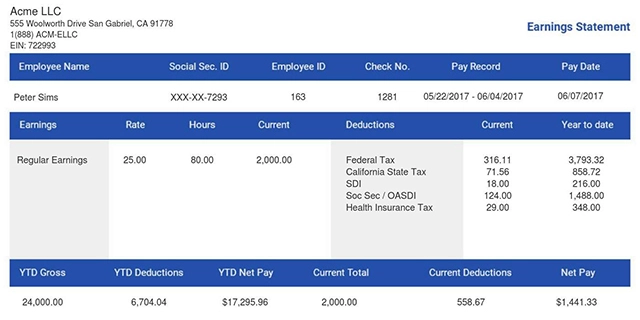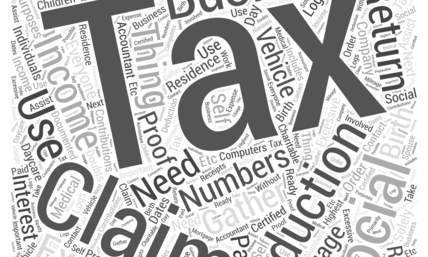Freelancing For Beginners: 1099 vs W-2
Freelance services are becoming more popular, and many people are now venturing into them to work. You're not alone if you're considering giving up the regular 9-5 to work on your own. However, there are some important things to know about freelancing. For instance, your tax obligations, clients' responsibilities to you, and managing your finances as an independent worker.
Being an independent contractor is different from being employed by a company. The IRS considers freelancers as 1099 contractors and employees as W-2 workers. Employees can receive their W-2 from their employers or create a W-2 online.
This article discusses relevant information for filing tax forms for new freelancers. You'll then understand the differences in freelancing 1099 and W-2 employment, and how they work.
Freelancing 1099 For Beginners
1099 workers are freelancers or individuals who work independently. They are usually not employed officially by employers and have multiple clients they work with to do contract work. As an independent contractor, you outsource work and handle your business income or office expenses. It works by scheduling your own hours, while also choosing to work other jobs for extra income. This could involve using self-employment means and working as a small business owner.
As an individual doing freelance work or an independent worker, you are responsible for paying your freelance taxes and taxable income. This includes your self-employment tax, Social Security and Medicare taxes. Taxes are not withheld, so you have to pay your taxes quarterly. The estimated taxes are usually based on your annual tax bill or liability.
1099 workers include:
-
Freelance photographers and videographers
-
Independent real estate agents
-
Web developers or software engineers working on contract
-
Social media managers or digital marketers
-
Fitness trainers or yoga instructors who work independently, and many more.
What Is Form 1099?
The Form 1099 is for independent workers, gig workers, and self-employed individuals. It is one of the tax forms that shows the amount of nonemployee compensation they receive from their client(s). It shows their gross income for the previous year, and your clients are required to send it by January 31st. This way, you can file your taxes when the tax season comes.
Non-Employee Compensation
This type of compensation simply refers to payment or compensation paid to individuals who are not officially employed. It is the money in exchange for their services, including commissions, awards, fees, and prizes.
Typically, as a non-employee, you'll receive Form 1099 if your client pays you more than $600 in a year. They're required to provide you with the 1099 forms, which include the 1099-MISC or 1099-NEC. The form shows information like your personal details, Social Security number, your client's taxpayer identification number, and the total amount paid.
W-2 Employees
A W-2 employee is a traditional and full-time staff member working according to the company's schedules and regulations. They are not considered self-employed, independent workers, or freelancers. They also aren't owners of businesses, whether it's a large or small business. The IRS doesn't require W-2 workers to pay self-employment tax, unlike freelancers.
Usually, these employees receive their W-2 form from their employer. If you're an employee who receives a W-2, your employer will withhold a percentage of your salary for Social Security and Medicare taxes (FICA). Your employer also pays 50% of these taxes. When filing your tax return, you can use your W-2 form to report your income and confirm any taxes owed or refunded. This way, you’ll avoid any issues with the Internal Revenue Service (IRS).
W-2 employees could include:
-
Teachers and school administrators
-
Customer service representatives
-
Construction workers employed by a company
-
Hotel front desk clerks and housekeepers
Differences Between Independent Contractors vs. W-2 Employees
Both of these are similar because of their tax forms. However, they're still different in certain ways, as their practices and tax rates are not the same. Their major differences include:
Benefits and Salaries
Full-time employees mostly enjoy employer-paid benefits and salaries. These benefits include paid leave, health insurance, and retirement savings.
On the other hand, independent workers or contractors don't receive any employer-paid benefits and don't receive a salary. Instead, they are responsible for providing their own benefits. Since they only do contract work and work for a company for a limited time.
Paying Taxes
Independent workers and W-2 employees both earn income, but their methods for paying taxes during tax season differ. The way they work, report income, and handle expenses is also quite different. Independent contractors or freelancers usually work for themselves. When they receive any miscellaneous income or other income, it's typically reported on their 1099 forms.
Since their taxes aren't also withheld, they must deduct expenses on their tax return. It includes expenses, such as phone and internet service, office expenses, supplies, and travel costs on their tax return. If they work from home, they can also claim a home office deduction to lower their taxable income.
Since W-2 employees work directly for a company or organization, their employer reports wages on a W-2 form. They automatically withhold earned income tax, Social Security, and Medicare. Employees generally can't deduct work-related costs when handling their tax return.
If you need to provide proof of your income, whether you’re a freelancer or an employee, our 123 paystub method works. It offers a fast and reliable way to generate professional paystubs for your records in 3 easy steps.
Choosing Between 1099 and W2

Beyond affecting the way you're paid, being a 1099 vs. W2 worker means different things about the nature of your role within a company. You'll file a W-2 if your job pays you a fixed salary, whether it's weekly or monthly. This means that you're a W-2 worker.
Some jobs may give you the option of working from home and being paid to complete specific projects. A 1099 is the appropriate form in this case.
If you are required to report to an office or log a specific number of hours, you may insist on a W-2 from your boss, even if they try to classify you as a 1099 worker. This will keep you protected from having your time taken advantage of by your employer and potentially save you time and money when taxes are due.
In Summary
Freelancing for beginners can be daunting without the proper information. Understanding the differences between being a 1099 and a W-2 employee should be an early priority. If you're an employer or a W-2 or 1099 worker, understanding how these work can be helpful. This way, it becomes easy to calculate your taxes, and you won't be misclassified either. You'll also be able to manage your work schedules and time, and decide what's best for you to work with.
Whether you're freelancing or not, we make it easy for employers to provide all workers with the proper forms. Let us help you create your W-2 form with our W-2 creator. You can create your pay stubs as well with our professional paystub maker. Visit us today!















